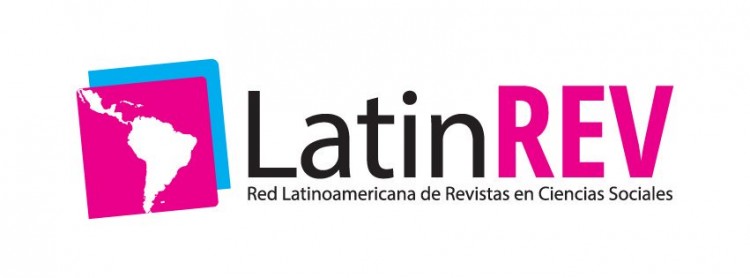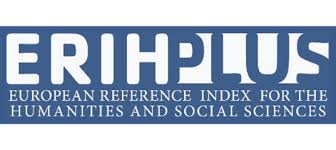Author Guidelines
GUIDELINES AND INFORMATION FOR AUTHORS
The “Revista Estudios Latinoamericanos” journal is an annual publication, edited by the CEILAT - Center for Latin American Studies and Research of the University of Nariño.
CLASSIFICATION OF ARTICLES:
Paper of Scientific and Technological Research: Document that presents, in a detailed manner, the original results of completed research projects. The structure generally used contains four important sections: introduction, methodology, results and conclusions.
Paper of Reflection: Document that presents completed research results from an analytical, interpretative or critical perspective of the author, on a specific topic, using original sources.
Review Paper: Document result of a finished research where the results of published or unpublished research are analyzed, systematized and integrated, on a field in science or technology, in order to account for advances and development trends. It is characterized by presenting a careful bibliographic review of at least 50 references.
Short Paper: Short document that presents preliminary or partial original results of a scientific or technological research, which usually require an early dissemination.
Case Report: Document that presents the results of a study on a particular situation in order to make known the technical and methodological experiences considered in a specific case. It includes a systematic and commented review of the references on analogous cases.
Topic Review: Document resulting from the critical review of the literature on a particular topic.
Letters to the Editor: Critical, analytical or interpretative positions on the documents published in the journal, which in the opinion of the Editorial Committee are an important contribution to the discussion of the topic by the reference scientific community.
Editorial: Document written by the editor, a member of the editorial committee or a guest researcher with recommendations or critical opinions in the thematic field of the journal.
Translation: Translations of classical or current texts or transcriptions of historical documents or documents of particular interest in the publication field of the journal.
Document of Reflection Not Derived from Research: Academic writing product of evaluation and critical evaluation of a certain academic subject that is of interest and social applicability.
Bibliographical Review: Report on the content and characteristics of a book or any publication.
Essay: Document resulting from a critical and analytical reflection of a specific topic, supported by a rigorous bibliographic review, in which a critical contribution is evidenced on the weak points, strengths, opportunities of inquiry and investigation of the subject matter on which it is reflecting, analyzing and reviewing.
SUBMISSION OF ARTICLES:
The article must be unpublished.
The article must not be submitted to simultaneous evaluation while it is in review and a concept is issued by the Editorial Committee of the “Revista Estudios Latinoamericanos” journal.
The article must be written with clarity, precision and objectivity.
The language of the journal is Spanish; however, we take papers in other languages for review.
The extension of the article is between a minimum of 12 and a maximum of 15 pages in single line spacing, with a margin of 3 cm. on all four sides, including tables and images. Use letter size and number pages consecutively.
The footnotes will be presented in Times New Roman size 9.
The heading of the Article must contain:
Title: Centered in bold capital, Times New Roman font 12 points.
Subtitles: aligned to the left, In lowercase and bold.
Author:
The names and surnames of the author or authors must be located under the title, centered in capital letters and bold, in Times New Roman 12 points.
Place under the name of the author his/her last academic title, the institution where it was obtained, the current institutional affiliation and email.
STRUCTURE OF THE ARTICLE:
The Article must follow the following structure:
Title: Must be clear. Avoid if possible the use of subtitles.
Summary: Must have a maximum length of 250 words, in Spanish. It must include the objective, method and the main conclusion reached. It must be clear and precise, without including citations, abbreviations, acronyms, symbols or text references.
Keywords: Between 3 and 6 keywords in Spanish. They should describe the most important topic fields of the article. For the inclusion of keywords, it is recommended to use the UNESCO Thesaurus according to the discipline of the article or a thesaurus of subjects widely known and used. Keywords must be presented in alphabetical order and separated by ";".
Introduction: It should briefly describe the problem of the investigation or the issue dealt with in the article, in relation to the objectives of the study and its scope. You can expose previous studies made by other authors, using original and relevant sources. The use of extensive textual citations should be avoided.
Methodology: It contains the methods and materials that were used to carry out the research or the final elaboration of the Article, such as: focus and research method, techniques and instruments for gathering information, population, sample and the process to analyze the information.
Results: This item refers to the most relevant results that represent values of interest for the research work or the article; they make out categories that help to classify the subjects, situations or qualities, altogether with numerical distributions and other derivations of the study. They can be presented in tables, charts, graphs or figures.
Conclusions: They should show the main findings of the research and its relation to the objectives of the study are sufficiently sustained, avoiding making ill-founded statements and conclusions or that do not come directly from the study carried out. They must identify the contribution to knowledge achieved by the Article.
Bibliography APA: It must include all the texts or documents that served as the basis for the preparation of the Article.
Citation and Reference
For the citation of the articles published in the “Revista Estudios Latinoamericanos” journal published by the Center for Latin American Studies and Research (CEILAT) of the University of Nariño, the sixth version of the American Psychological Association (APA) reference system has been adopted.
Below you will find a brief description of the standard that will serve as a basic tool to properly carry out the citation in your articles in order to protect copyright.










_(2).png)








